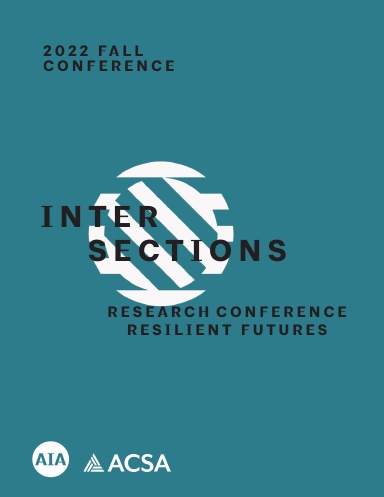Author(s): Jennifer Smith
While design education and practice are increasingly specialized, even hyperspecialized1, synchronous with technological advancements and robust building systems, contemporary wicked problems of climate change, social inequities, and land use development practices require additional designers who work between disciplines to develop emergent fields of study. Interdisciplinary and transdisciplinary design are critical in undergraduate education and professional practice as they promote diverse typological responses, rather than advocating for physical and nonphysical artifacts nested within traditional disciplinary boundaries. This integrated approach to design responds to complexity through the development of new theoretical frameworks and diversity of perspectives informing the design process. While this approach manifests in professional practice at firms like Heatherwick Studio, Weiss/Manfredi, James Corner Field Operations, and Bjarke Ingels Group, to name a few, it has yet to inform undergraduate education. Since the Bauhaus, examples have emerged of early education intentionally “un-siloing” design fields and integrating traditional disciplines.2 Elusive, however, are present design pedagogies conceptualizing that future specialization is optional. Many programs initially organize design studios generally, and later require students to select a specific design field such as urban design, landscape architecture, architecture, industrial design, graphic design, and so on. While this form of design education is critical, it should not be the sole framework as it limits future architecture, engineering, and construction (AEC) professionals to collaboratively problem solve for appropriate solutions. This model compels team members to advocate for their disciplinary and contractual scope of work, which may not produce the most appropriate solution for end-users and environmental conditions.3 In an AIA report researchers found that collaborative, integrated project delivery (IPD) methods promote sustainable results and allow for increasingly aggressive goals as team members are incentivized to increase overall project success.4 Germane to contemporary design practice focused on collaborative responses to real world complexities, an interdisciplinary undergraduate design degree that does not suppose students later specify an area of study is requisite.This paper explores interdisciplinary and transdisciplinary design education and practice through interrogating existing design pedagogies, exploring a series of university case studies, interviews with design practitioners, and investigation of a specific university’s undergraduate program where integrated design methods are being explored, tested, and refined. Contemporary design work requires specialization; however, in the wake of hyperspecialization, design pedagogy should additionally promote problem solvers between siloed industries and those working to develop emergent theoretical frameworks. This interdisciplinary and transdisciplinary educational shift more acutely aligns with the demands of design practice aimed at highly collaborative processes and divergent typological responses to stubborn problems.
https://doi.org/10.35483/ACSA.AIA.Inter.22.11
Volume Editors
Gail Napell & Stephen Mueller
ISBN
978-1-944214-42-13

 Study Architecture
Study Architecture  ProPEL
ProPEL 
